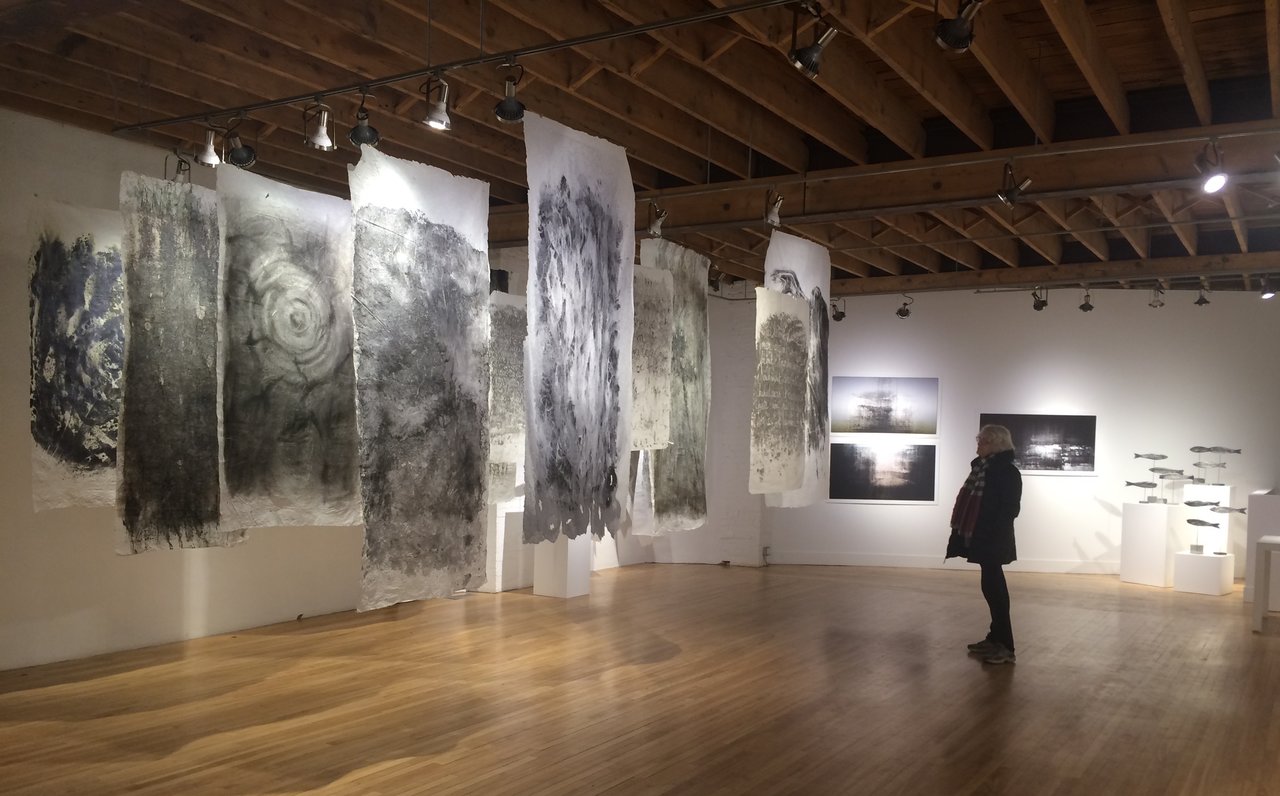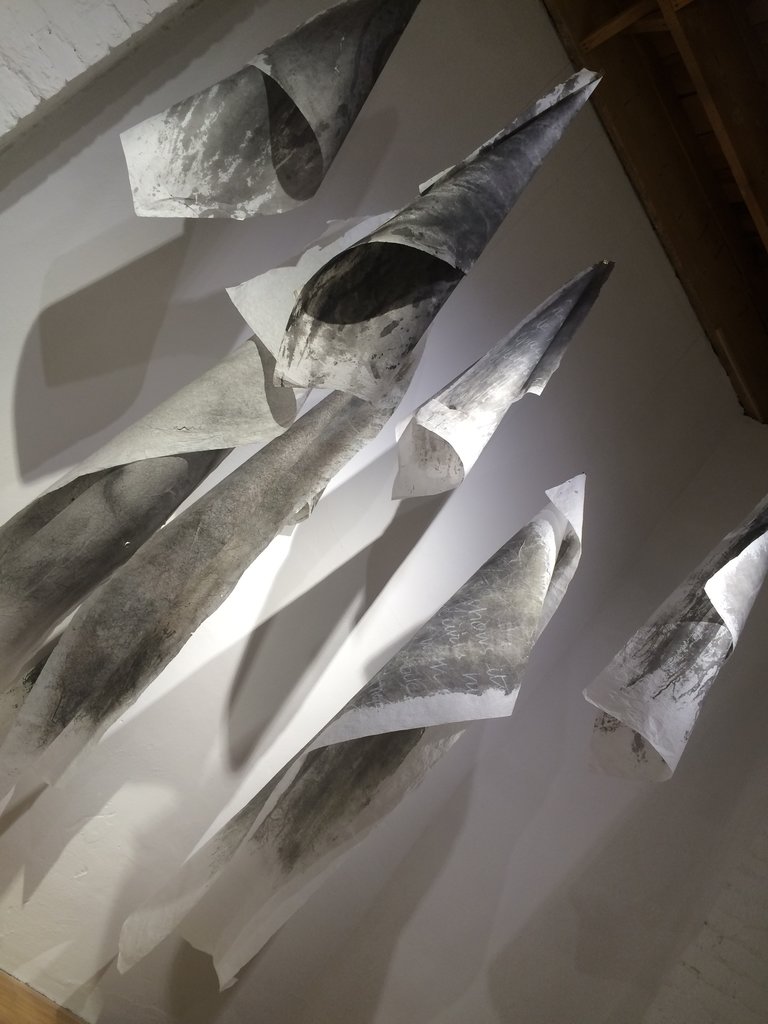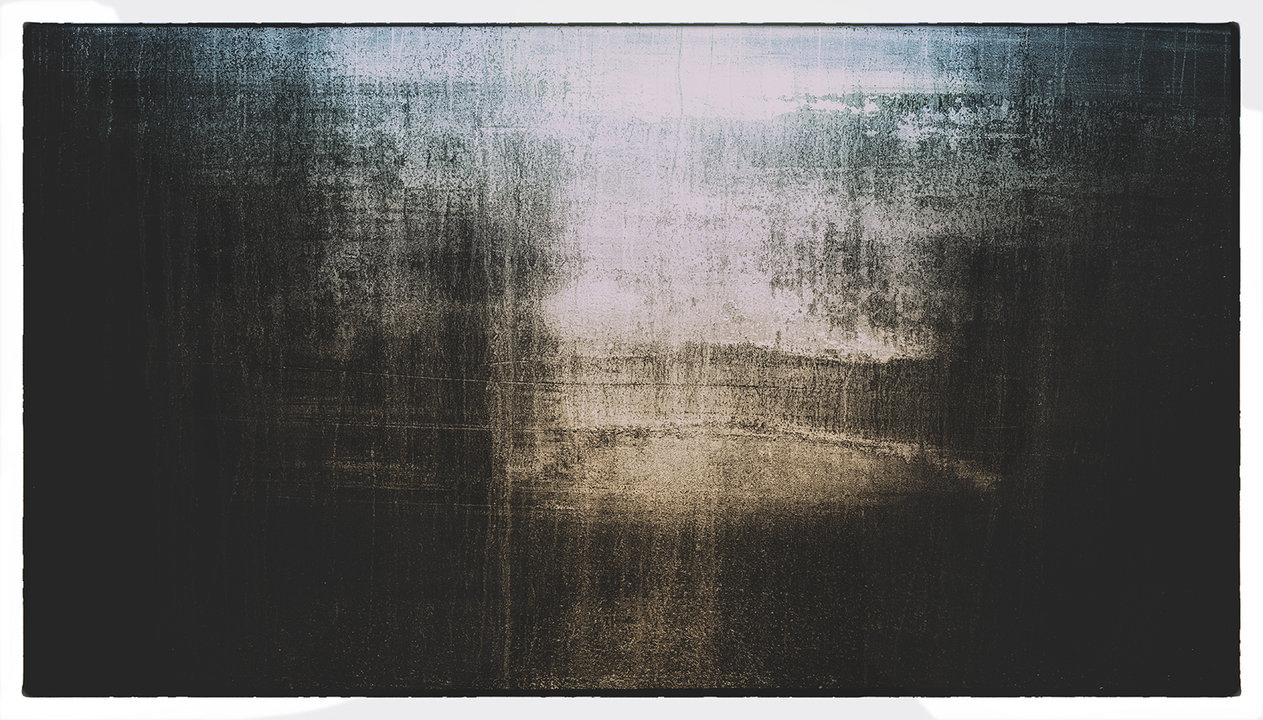The sea, with all its dynamic temperaments and inexhaustible stretches, has been engaged in a finicky relationship with humankind since the onslaught of the industrial revolution. Unfortunately, these vast water basins that give home to many vital ecosystems filled with an abundance of unique life forms, have become a breeding ground for toxic waste disposal and calamitous petroleum spills. Contemporary photography reveals the extent to which these unnatural disasters have strained the daily lives, mating habits, and health of those engaged with pelagic environments. Images of innocuous birds drenched in oil, where their lustrous feathers are seemingly marred by a thick opaque mass, encapsulate the global crisis of one of Earth’s oldest and most indispensible ecological structures.
Throughout the history of art, artists have been known to align their painterly practices with the swellings, upsurges and capaciousness of the sea. This work, simply referred as the visualization of the philosophically charged notion of “The Sublime,” is most resonant on the canvases of J.M.W. Turner, Caspar David Friedrich and other nineteenth-century Romantics. In their paintings, oceanic landscapes were depicted as a robust natural force, an ironclad fist ready to deliberately pummel any humanly intruders brave enough to explore this potentially deadly terrain. However, in the hands of contemporary artists Margaux Tartarotti and Heidi Leverty, these once-ominous yet transcendent bodies of water are stripped of their foreboding nature and rendered futile and pained. “Marée Noire,” the twin sisters’ latest exhibition on-view at Walnut Contemporary, sees the artists allying themselves with modern day artistic forays into activist art, although in a more abstracted manner.
 Installation view of Marée Noire by Margaux Tartarotti and Heidi Leverty at Walnut Contemporary, 2017. Courtesy of Walnut Contemporary
Installation view of Marée Noire by Margaux Tartarotti and Heidi Leverty at Walnut Contemporary, 2017. Courtesy of Walnut Contemporary
While the identical twins may find many commonalities between themselves, personality and interest-wise, their artistic execution remains quite dissimilar from one another. Tartarotti presents her work in the form of painting and sculpture, while Leverty utilizes the photographic medium to manifest her sociopolitical ideas. However, both artists stick to a strictly brooding colour scheme, rarely rendering their works outside the realm of neutral tones and vivid blackness. In a dual exhibition, the sisters allow their distinct artistic endeavors to reflect, comment upon, and compliment each others’ oeuvres, showcasing a thematically-succinct sister act.
 Installation view of Marée Noire by Margaux Tartarotti (front) and Heidi Leverty (on the wall) at Walnut Contemporary, 2017. Courtesy of Walnut Contemporary
Installation view of Marée Noire by Margaux Tartarotti (front) and Heidi Leverty (on the wall) at Walnut Contemporary, 2017. Courtesy of Walnut Contemporary
Discussing Tartarotti’s contributions to Marée Noire will immediately strike a solemn chord amongst gallery attendees. Inspired by recent natural fiascos involving faulty sea vessels transporting oil, the artist concentrates her work on the helpless marine animals and aquatic landscapes affected by these unintentional spills. Tartarotti has crafted feathers that flank the exteriors of the gallery, illustrating the bevy of voiceless creatures whose livelihoods become submerged in a thick and often dangerous sludge of human necessity and greed. However, most notable is the series of large panels installed in the center of the exhibition, which act as an all-encompassing focal point. Visualized as aerial images of these specific sites of tragedy, the water’s free-flowing essence is rendered still by the viscous application of oily black, undermining the splendour of oceanic life.
 Installation view of Marée Noire with Margaux Tartarotti’s work at Walnut Contemporary, 2017. Courtesy of Walnut Contemporary
Installation view of Marée Noire with Margaux Tartarotti’s work at Walnut Contemporary, 2017. Courtesy of Walnut Contemporary
Leverty’s photographic contributions are less recognizable in appearance, using a form of abstraction to demonstrate the collapse of natural beauty under industrialized means. However, Leverty’s work emits a meditative quality that soothes the more confrontational efforts of Tartarotti, providing a stark tranquility to the exhibition.
Gallery owner Ibérina Raquel Vilhena nullifies traditional modes of presentation through a more contemporary means of installation. The art is displayed in a method that warrants a more thorough phenomenological presence, as viewers assume a role as an explorer of these unfavorable terrains, uncovering the often-entropic destruction we inflict on our surrounding bionetworks. In an ever-escalating discourse on global climate change and human intervention, Tartarotti and Leverty confront such concerns as only an artist can, through a distinct visual acumen that is both telling and universal.
David Saric
*Exhibition information: January 21 – February 18, 2017, Walnut Contemporary, 201 Niagara Street (side lane entrance) Toronto. Gallery hours: Wed to Sat, 1 – 6 pm.

